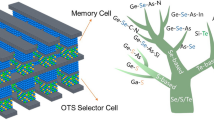Summary
An alloy based on the Cu-Al-Ni ternary system has been developed at the research center of Brown, Boveri & Co., Baden, Switzerland, which provides a fully reversible (two-way) shape memory effect at significantly higher temperatures than those afforded by commercial memory alloys such as NiTi and Cu-Zn-Al. The higher temperature capability of this alloy could open new fields for the application of the shape memory effect, particularly in thermal switching and protection devices. After suitable deformation and processing, a shape change is observed while heating the alloy through the temperature interval from 175 to 190°C. This shape change can be completely reversed during subsequent cooling from 155 to 125°C. The magnitude of the reversible strain produced by this alloy is 1.5%; somewhat higher strains can be achieved if lower memory temperatures can be accepted, and conversely, better high temperature capabilities can be achieved by accepting smaller reversible strains. The memory effects in this alloy have been found to be unaffected by short overheatings to temperatures as high as 300°C.
Similar content being viewed by others
References
A. B. Greninger and V. G. Mooradian, Trans. Met. Soc. AIME, 128 (9138), p. 337.
C. M. Wayman, J. of Metals, 32(9) (1980), pp. 129–137.
R. Banks, “Nitinol Heat Engines,” in Shape Memory Effect in Alloys, edited by J. Perkins, AIME, New York, New York, 1975, pp. 537–545.
J. D. Harrison and D. E. Hodgson, “Use of TiNi in Mechanical and Electrical Connectors,” in Shape Memory Effects in Alloys, edited by J. Perkins, AIME, New York, New York, 1975, pp. 517–524.
H. Pops, “Manufacture of an Integrated Circuit Package,” in Shape Memory Effects in Alloys, edited by J. Perkins, AIME, New York, New York, 1975, pp. 525–536.
M. A. Schmerling et al., “A Proposed Medical Application of the Shape Memory Effect: A NiTi Harrington Rod for the Treatment of Scoliosis,” in Shape Memory Effect in Alloys, edited by J. Perkins, AIME, New York, New York, 1975, pp. 563–574.
K. Otsuka and K. Shimizu, J. Appl. Phys. 8 (1969) p. 1196.
K. Otsuka, T. Nukamura, and K. Shimizu, Trans. JIM, 15 (1974) p. 200.
K. Otsuka, et al., Acta Met., 24 (1976) p. 207.
K. Otsuka, H. Sakamoto, and K. Shimizu, Acta Met., 27 (1979) p. 585.
T. Duerig, J. Albrecht, and O. Mercier, unpublished research (1981).
E. Hornbogen and H. Warlimont, Acta Met., 15 (1967) p. 943.
Rights and permissions
About this article
Cite this article
Duerig, T.W., Albrecht, J. & Gessinger, G.H. A Shape-Memory Alloy for High-Temperature Applications. JOM 34, 14–20 (1982). https://doi.org/10.1007/BF03338156
Published:
Issue Date:
DOI: https://doi.org/10.1007/BF03338156




